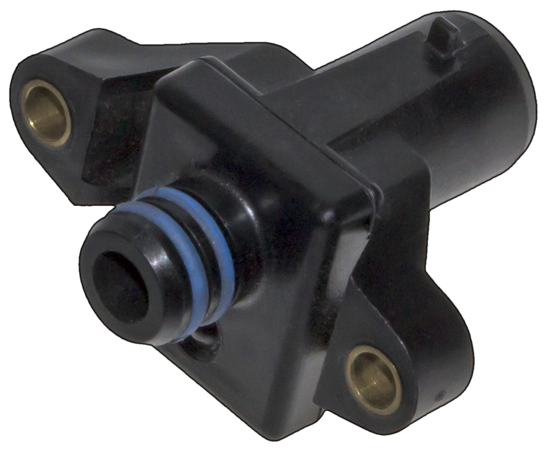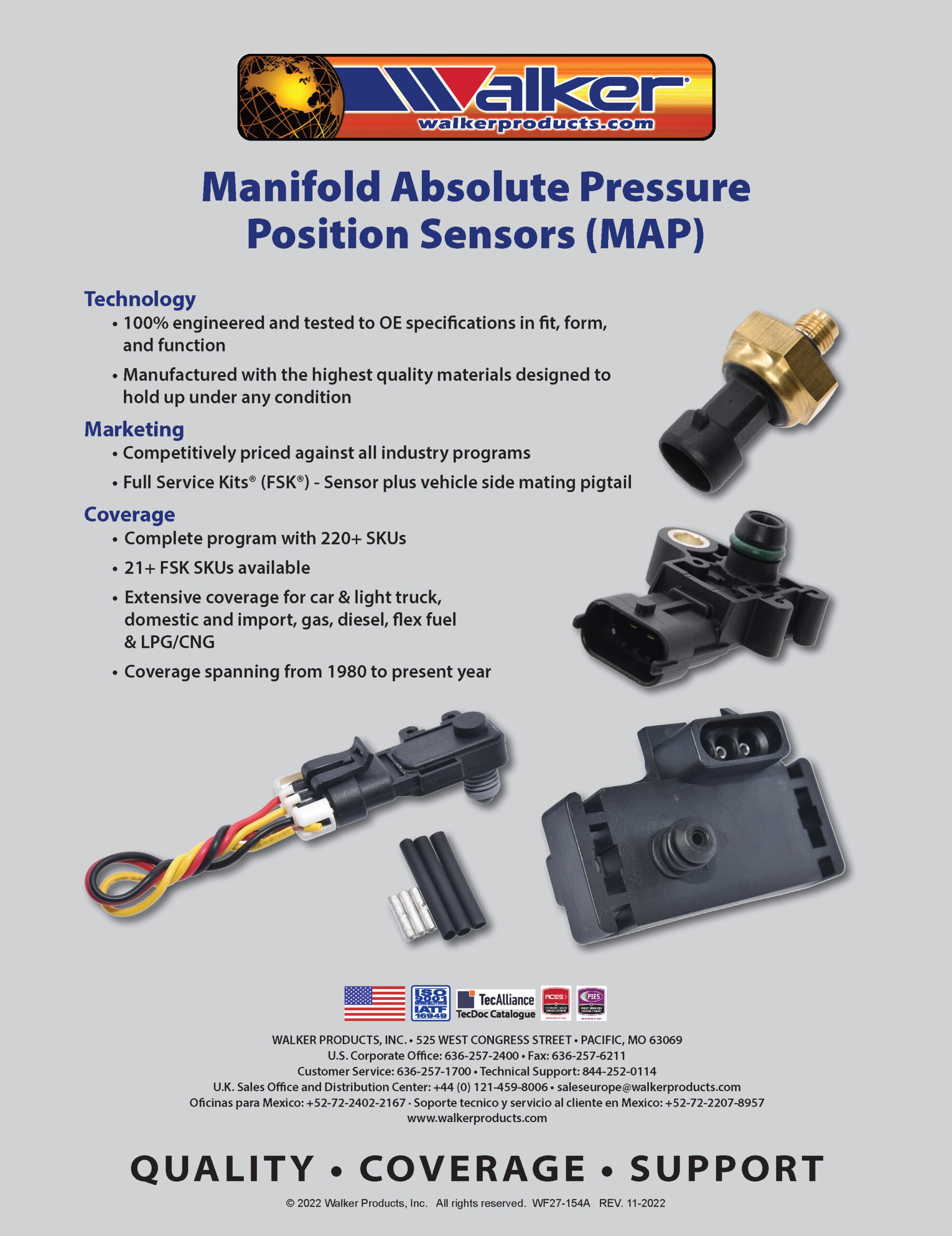Manifold Absolute Pressure Sensors (MAP)
Barometric Pressure Sensors (BPS)

The Manifold Absolute Pressure Sensor (MAP) measures manifold pressure through changing voltage and sends the information to the vehicle’s onboard computer. The computer uses this and other inputs to calculate the correct amount of fuel delivered to the cylinders.
The Barometric Pressure Sensor (BPS), also known as the Barometric Air Pressure Sensor (BAP), measures the atmospheric pressure of the environment and sends this information to the vehicle’s ECU. Vehicles driving in high altitudes where the air is thinner means less oxygen for the engine during the intake stroke. The BAP senses this and sends a message to adjust the amount of fuel accordingly. The BAP works closely with the MAP to determine the best timing and fuel conditions for optimum engine performance.
Common causes of a Pressure Sensor failure:
• Contaminated
• Clogged
• Electronics damaged from intense engine heat
• Vibration damage from prolonged exposure in the engine compartment
Symptoms of a failing Pressure Sensor may include:
• Engine will not start or starts poorly
• Detonation or misfire
• Excessive fuel consumption
• Lack of engine power
• Check Engine Light on
The following OBD II error codes are the most commonly found with this product type. On-Board Diagnostic (OBD) systems are integrated into the computers of our vehicles to monitor emissions. The first generation of OBD requirements was implemented in California in 1988. Since then, these requirements were adopted by the US EPA for all passenger vehicles manufactured after 1996. In 2005, OBD systems then also became mandatory for heavy-duty vehicles and engines up to 14,000 lbs. GVWR. In 2008 the EPA finalized OBD regulations for 2010 and later heavy-duty engines used in highway vehicles over 14,000 lbs. GVWR and made changes to the OBD requirements for heavy-duty applications up to 14,000 lbs. GVWR to align them with requirements for applications over 14,000 lbs. GVWR.
OBD II is now the standard in diagnosing vehicle emissions in. The codes listed for this product type are common instances that may relate to your vehicle and should be used as a guide only. Walker Products will not be held responsible for any use of this information. It is highly suggested that you consult with a professionally trained mechanic prior to any automotive repair, and that you follow all vehicle manufacturer and EPA guidelines for removal, replacement, diagnostics, OBD II code clearing, ECU and PCM relearn procedures.
o P0068 MAP/MAF – Throttle Position Correlation
o P006A MAP – Mass or Volume Air Flow Correlation
o P006B MAP – Exhaust Pressure Correlation
o P006C MAP – Turbocharger/Supercharger Inlet Pressure Correlation
o P00B8 MAP – Mass or Volume Air Flow Correlation
o P0069 Manifold Absolute Pressure – Barometric Pressure Correlation
o P0105 Manifold Absolute Pressure/Barometric Pressure Circuit
o P0106 Manifold Absolute Pressure/Barometric Pressure Circuit
o P0107 Manifold Absolute Pressure/Barometric Pressure Circuit Low
o P0108 Manifold Absolute Pressure/Barometric Pressure Circuit High
o P0109 Manifold Absolute Pressure/Barometric Pressure Circuit Intermittent
o P023D Manifold Absolute Pressure – Turbocharger/Supercharger Boost
o P023E Manifold Absolute Pressure – Turbocharger/Supercharger Boost
o P2073 Manifold Absolute Pressure/Mass Air Flow – Throttle Position
o P2074 Manifold Absolute Pressure/Mass Air Flow – Throttle Position
o P2226 Barometric Pressure Sensor “A” Circuit
o P2227 Barometric Pressure Sensor “A” Circuit Range/Performance
o P2228 Barometric Pressure Sensor “A” Circuit Low
o P2229 Barometric Pressure Sensor “A” Circuit High
o P222A Barometric Pressure Sensor “B” Circuit
o P222B Barometric Pressure Sensor “B” Circuit Range/Performance
o P222C Barometric Pressure Sensor “B” Circuit Low
o P222D Barometric Pressure Sensor “B” Circuit High
o P222E Barometric Pressure Sensor “B” Circuit Intermittent/Erratic
o P222F Barometric Pressure Sensor “A”/”B” Correlation
o P2230 Barometric Pressure Sensor “A” Circuit Intermittent/Erratic
o P2262 Turbocharger/Supercharger Boost Pressure not Detected –
o P226B Turbocharger/Supercharger Boost Pressure Too High – Mechanical


